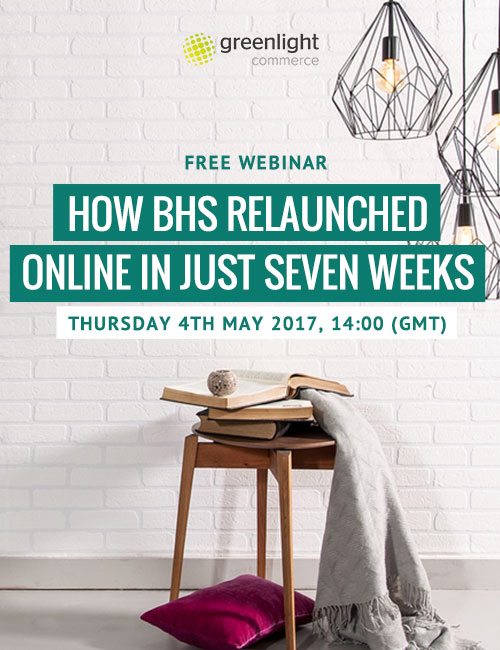On the 11th of February, we were lucky enough to spend an exciting evening mixing technology leaders and retailers to explore how best to optimise their customer’s omnichannel experience. The reality today is that anyone can sell online, so how do you differentiate?
In order to explain why omnichannel matters, we need to explore what it’s needed for. The answer lies simply in the way that it enables retailers to provide customers with the experience they want, at the point they want it. Different customers buy in different ways at different times, and retailers and brands want to be able to service that choice wherever they can.
Technology implementation across offline and online
What we are seeing is an evolution in the market. Whether you choose to call it a customer centric approach or something else, the reality is that every potential customer today owns multiple connected devices and leading in ecommerce means integrating this online complexity into real world experiences in a way that entices the consumer towards your product and closes the sale. Every challenge to a transaction creates friction. Technology can overcome this and is an opportunity to maintain the focus and trust of the customer.
The point of omnichannel is to ease the customer pathway and maintain customer attention span, as well as all that good internal stuff about sales channel flow, crossing management silos, emphasising retouch and measuring attribution. The right platform can manage across silos, improve ROI, smooth internal communications, and provide the right data for analysis, ensuring an ever more personalised experience.
We already know that technology often runs ahead of products and services, of what people expect to see in day to day use. This can sometimes be a challenge when the media talks about new technologies, but the implementation is some way off. The management of expectations is really important here. That’s the case not just for customers but for businesses themselves – today most technology investment is expected to see a return in 12 months, an increasingly shrinking period.
At the same time, the promise of omnichannel in crossing silo barriers both online and offline can be overblown, because no platform can make a difference without the proper implementation and buy-in across the company. What we’re experiencing today with the shift to social is just the beginning and past experience is no longer a reliable guide to what might happen in the future – the fundamentals may remain in terms of people, intent and behaviour, but how that plays out is going to be new.
Personalisation to differentiate
Once you’ve managed the sticky question of how to manage your customer across a myriad number of touchpoints it’s time to look at one of the central approaches to differentiation, personalisation. A 2019 Mckinsey report showed that personalisation can drive 5 to 15 per cent increases in revenue and 10 to 30 per cent increase in marketing-spend efficiency, mostly through product recommendations and triggered communications within single channels. So, what does that mean for the omnichannel approach?
What it means is that in order to service your customer’s needs, you’re going to need the right information at the right point at the right time. This can go wrong today, as people lead complex lives and the tale of months of nappy promotions to a 75-year-old man who’d had his grandchildren visiting comes to mind and made that point well. Advances in analytics as well as the data collection that underpins it are improving, so that an increasingly personal and increasingly human experience can be had.
Information, data analytics, localisation for targeting
Recognising that information access today distorts people’s expectations is an important part of that process. Customers are now a fragmented base and demographic breakdowns that worked forty years ago are no longer fit for purpose. That means that analytics need to be localised too. As one guest pointed out, the digital world does a great job of complicating things, while another asked if it is actually a more complicated world or whether we just know too much?
If effective personalisation is to be achieved though, the analytics require the right data and the question of who owns the data remains at the heart of the omnichannel challenge. It’s important to remember that sometimes the brand and the retailer are not one and the same. Perhaps one of the most fascinating elements of the discussion was that despite the different markets in which the evening’s retailers operate, they face the same barrier in accessing customer data.
Those selling FMCG through department stores to white goods makers selling through third parties all face the struggle to access customer data. How can you have an omnichannel experience if you don’t have access to customer data at a key touch point? Yet do you want to damage commercial relationships in order to access that data? While some third parties will allow brands to access the data at a cost, there is little question that the growth of pop-ups not only improves brand recognition and market targeting but provides access to on the ground data at the same time. Who owns the data is a significant market concern.
It’s this focus on understanding the customer that reminds us of the importance of localisation. Initially localisation meant ensuring that your site was published in the right language, evolved to cover different payment styles and cultural buying modes but today it covers behaviour too. We need to understand the intent and behaviour of different people at different times in order to understand the customer buying process. This is about more than just buying behaviour, however, it’s about how you communicate with that customer and what draws them in.
Content and communication channel
While the delivery method might be different across different channels or in different countries, the rules of communication remain the same and those different channels often do different jobs. The right communication is crucially important, whether that’s person to person or system to system.
This discussion led to the role of Amazon, described by one guest as “the biggest retail threat we’ve ever seen.” Yet, while seen as a threat, Amazon is also seen as a dumbed down experience and the consensus is that retail is moving, like much else, into the realm of social. A few years ago, there was much debate about buying through Instagram and other channels, today it is widely accepted as the future.
One of the biggest take-aways of the evening’s discussion was the importance of using content in the right way, using product and content to help promote each other. Examples of this from Lego and the Lego movie, to simply putting products in a channel and surrounding it with content abounded. What came through really strongly was that the 2nd highest lead conversion was from a brand’s own content. The key is to remember what your customers want, thinking about both their intent and their behaviour – and sometimes that isn’t always personalisation. What matters is joining up who the customer is with what they want to buy, and there are many different approaches to this.
And finally, ask the right questions
The end the point here is that the technological solutions exist here if you know what questions to ask, and you leverage the traditional strength of the retailer in focusing on what the customer wants – then, with the right implementation, the technology simply becomes a means of providing that. Making the right choice about what to do and when to do it in terms of architecture and sequencing can be the difference between success and failure. That means prioritising actions, learning to ask the right questions, ensuring that KPIs include the impact of changing regulations and that means taking a step back and trying to identify what your business is trying to do. Digital is actually not about technology but about a mindset – get that in place and you’ll be a leader, not a follower.
Download Greenlight Commerce’s latest research here.
*Roundtable dinner discussion sponsored by Greenlight Commerce, BigCommerce, Fluent, and Attraqt.









